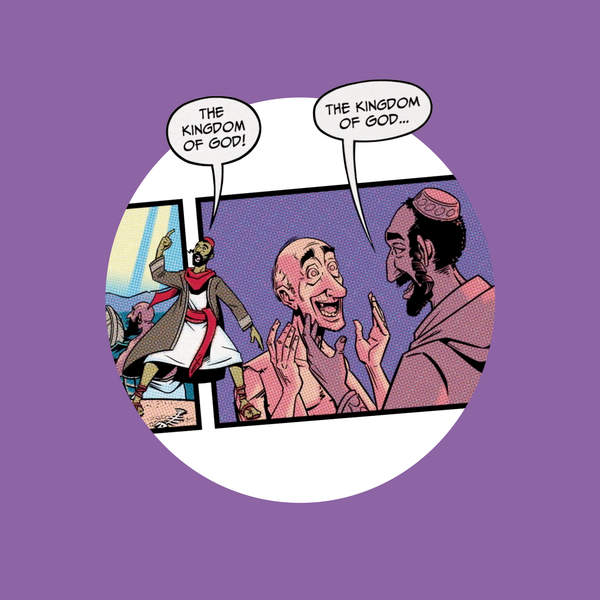
Metaphor and Our Imagination
Episode Chapters
Show Notes
This is our first episode in our three-part series on the use of metaphor in the Bible. In part one, the guys discuss the metaphors used in Psalm 46. 1 God is our refuge and protection, found to be a great help in times of distress 2 Therefore we won’t be afraid when the land shifts when the mountains totter into the heart of the seas; its waters roar, they churn, mountains quake at its swelling. Selah. 4 A river whose streams make glad the city of God, The holy dwelling places of the Most High God 5 God is in its midst, it will not totter; God will help it when morning dawns. 6 The nations roar, the kingdoms totter; He raised His voice, the land melted. 7 The Lord of hosts is with us; The God of Jacob is our tall fortress. Selah. 8 Come, behold the works of the Lord, Who has wrought desolations in the land. 9 He makes wars to cease to the end of the land; He breaks the bow and cuts the spear in two; He burns the chariots with fire. 10 “Be still, and know that I am God; I will be exalted among the nations, I will be exalted in the land.” 11 The Lord of hosts is with us; The God of Jacob is our tall fortress. Selah. ————————————- In this psalm, there are some obvious metaphors used. Specifically, God // protective refuge (v.1) // tall fortress (v.7) God // Jerusalem temple // river Chaotic, pounding ocean waves // nations at war God melting earth // God breaking nations // God’s exaltation. These are vivid images, but what is going on here? Every culture has its own way of developing metaphors and imagery unique to their history and experience. Biblical poetry is drawing on a core “encyclopedia of production,” from which the poets draw to develop images and metaphors. In part two, the guys go over the core images that are presented above. Why would a poet use these image pairings and combine them in this specific way? Jon comments on how metaphors change over time and within each culture. For example, when the steam engine was popular and represented a huge change in society, people would say things like, "he’s hot-headed” or “my gears are turning.” Then once computers came along, our cultural metaphors shift to sayings like, “let me process that.” In part three, Tim and Jon discuss the differences between these figures of speech: Metaphor: Describing one thing as if it were another. Example: "She is a ball of fire." Simile: Explicit comparison between two things. Example: "She is like a ball of fire." Metonymy: Referring to something by naming what it’s associated with. Example: "The pen is mightier than the sword." "Hollywood produces so many films." Synecdoche: Naming a whole thing to refer to part of it, or naming part of a thing to refer to the whole of it. Example: "The U.S. won a gold medal today!" "Portland is a quirky town." " My hands were tied in this situation." "Let’s do a head-count." Thank you to all our supporters! You can find our more about The Bible Project and get free resources at www.thebibleproject.com
Show Produced By:
Dan Gummel, Jon Collins
Scripture References
Referenced Resources
- "The Name of a Rose" by Umberto Eco
- "More Than Cool Reason: A Field Guide to Poetic Metaphor" by George Lakoff and Mark Turner
- "Metaphors We Live By" by George Lakoff and Mark Turner
Interested in learning more? Check out Tim's library for a list of recommended books and other resources.
Get the BibleProject app for access to our entire library of resources in one place.

